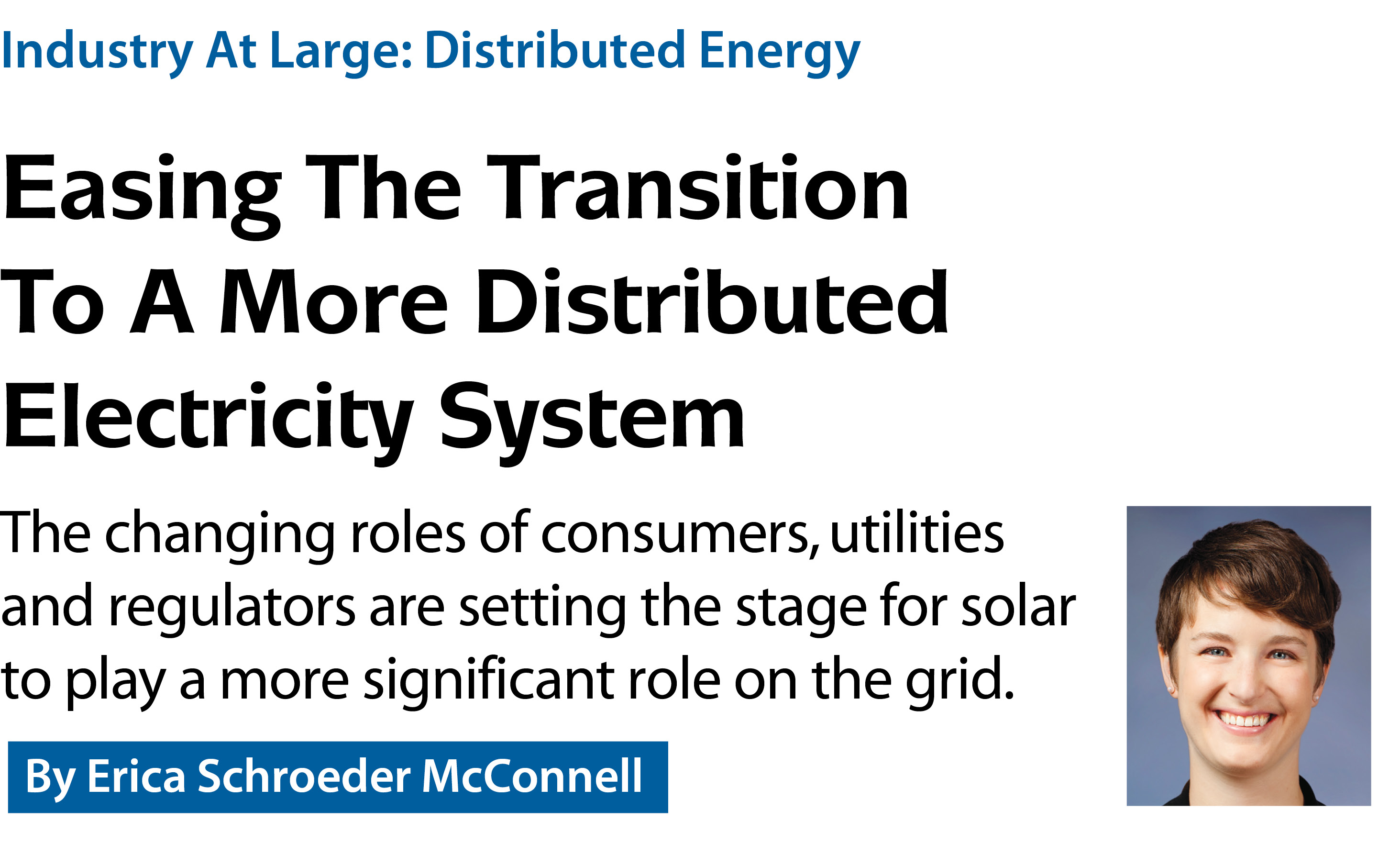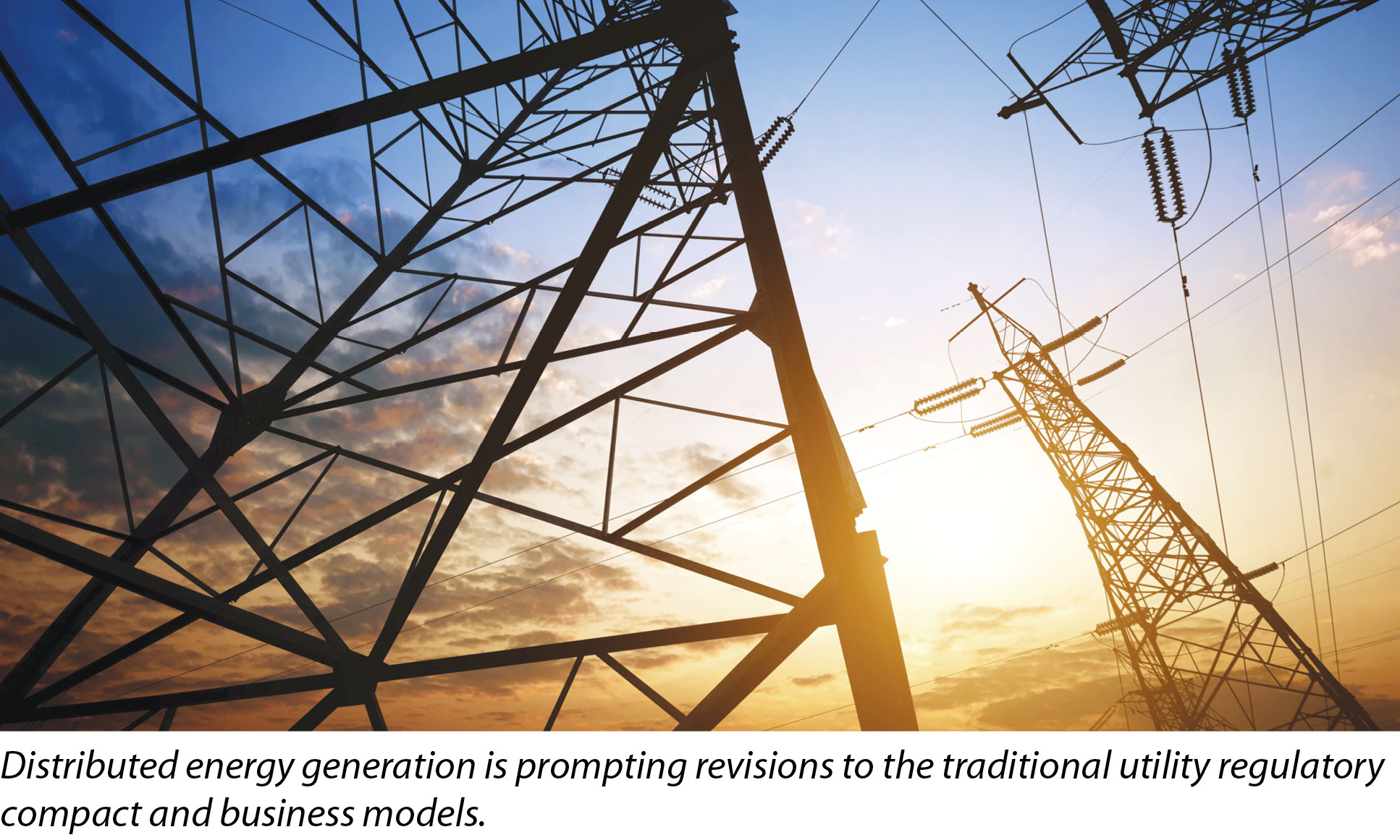

301 Moved Permanently
Daily headlines offer news on solar growth, new technologies, consumer incentives and what’s happening in key states to make it easier - and more affordable - to connect to the grid. Equally important, however, is the conversation that surrounds our need as a nation to update that grid to accommodate significantly higher penetrations of distributed energy resources (DER), such as solar and other renewables, as well as energy efficiency, demand-side resources, energy storage, electric vehicles and energy management technologies.
With more opportunities than ever before to enable a two-way flow of energy and information, along with increasing emphasis on reliability, security and resiliency, multiple compounding factors are driving a national movement toward a more modern electricity grid. This ideal grid will allow more solar and other renewables to be produced and will allow universal consumer access to the economic and environmental benefits of clean energy. How that will be accomplished and exactly what it will look like is as critical to the solar industry as the growth of consumer interest and the quality of an installation. What’s more, the rapid evolution of technology and increasing market demands for more clean energy choices are, in most cases, rapidly outpacing the laws, regulations and rules that govern utilities and the electricity system.
In “Easing the Transition to a More Distributed Electricity System,” recently released by the Interstate Renewable Energy Council (IREC), we offer a unique look at how to move more swiftly and efficiently toward a modern grid and a more distributed electricity system. As states, utilities and regulators face new demands on an aging electricity system and regulatory framework, there is a strong rationale for updating the “regulatory compact” - the theoretical concept that underlies the rules and regulations that govern the electricity system and electric utilities. The report offers guidance for state utility regulators, which, ultimately, will facilitate this transition while accommodating technological innovation and modern policy goals.
The regulatory compact
To better understand the context of the report and its regulatory recommendations, it is important to understand the regulatory compact from a historical and functional standpoint.
The regulatory compact is fundamental to the way electric utilities are overseen and operate; it is the premise on which electric utilities are granted their guaranteed monopoly status in the U.S. The compact represents an agreement between a utility and its customers: In exchange for an exclusive geographic franchise, the utility offers certain monopoly services to its customers at just and reasonable rates.

The services covered under the franchise vary among states, ranging from vertically integrated utilities that provide bundled electricity service to distribution-only utilities that provide unbundled distribution service. In all states, the regulatory compact requires a monopoly utility to offer universal and reliable service to all electricity users in its service territory. A utility’s rates are intended to allow it to recover its costs and earn a reasonable return on its investments. Utility regulators - including commissions (investor-owned utilities), boards (cooperative utilities), and governmental or quasi-governmental entities (municipal utilities) - are the primary overseers of the regulatory compact. In addition to determining rates, regulators establish and enforce safety and reliability standards, service quality metrics, and other rules and standards.
The compact was established and evolved during a period of rapid industrial expansion in the U.S., and it was effective in supporting energy-intensive industrial expansion during World War II and through the 1960s. Utilities built or marketed electricity from large, centralized generation - mostly powered by fossil fuels, nuclear and large hydroelectric dams - through their transmission and distribution systems. The compact worked relatively well to allow for the growth and maintenance of a robust electricity system during a period when large, central station technologies were the most efficient option available and the public had fewer environmental concerns, particularly about carbon emissions.
In the 1970s, the formation of the Organization of the Petroleum Exporting Countries increased public concern over the price of electricity, which occurred simultaneously with growing public outcry about environmental issues and notable technological advancements. Changes in federal energy policy and some states’ progressive energy policies began to reflect these new realities and impose increasing pressure on monopoly utilities, as well as the regulatory compact.
Since the 1990s, the combination of information, communications and electric system control technologies, along with dramatic improvements in renewable energy and energy-efficiency technologies, has caused basic changes in the electricity sector. In particular, in the last decade, central station and distributed renewable energy production have increased dramatically. The regulatory compact has changed in some ways, as well. For example, some states deregulated their markets in the 1990s, which removed electric utilities’ traditional monopoly over generation.
More recent changes have continued to put pressure on the regulatory compact, however, and further evolution is now required.
Toward a more distributed grid
The emergence of new technologies on the customer side of the electric system, such as distributed generation, energy efficiency, electric vehicles, energy storage and demand response technologies, is allowing more energy consumers to decrease their electricity demand, act as energy producers and otherwise manage their energy usage. Simply put, the traditional role of the energy customer is changing - which, in turn, means that the role of utilities is changing, too.
Simultaneously, the public has become increasingly concerned about the environmental impacts of electricity generation - especially its contribution to climate change and negative effects on air and water quality. Consumers and regulators are also looking for ways to improve the resiliency of the electric system during severe weather events, which are becoming more common due to climate change.
Changes to the physical grid are necessary to accommodate new technologies. But that’s not enough to get us there. The regulatory compact must also evolve to accommodate new public priorities, changing consumer interests, economic and environmental risks, and transformative technologies. The relative ease of transition for utilities and the electricity grid to a more distributed and clean energy future will depend largely on proactive and meaningful regulatory reforms.
Through “Easing the Transition,” IREC seeks to provide regulators with some practical pathways for consideration as they address the changing roles and interests of customers and utilities. We offer five approaches for state utility regulators to consider, each of which aims to holistically and expediently move toward our modern grid vision, where local distributed resources play a greater role. By reevaluating and reconsidering their approach, regulators can help ensure a smooth transition to a new, more modern grid and can help define the role for electric utilities in this new era.
The five approaches are as follows:
1. Cost recovery: Adjusting traditional cost-of-service ratemaking affects which investments that utilities have incentives to make. Regulators could consider a ratemaking framework that moves away from incentives primarily for large, capital investments and toward incentives for investments that facilitate more distributed, dynamic, environmentally sustainable electricity systems. Two ratemaking mechanisms that could help regulators to achieve this goal are revenue decoupling and performance-based ratemaking.
2. Rate design: Rate design is a powerful tool. Today, it reflects regulators’ and utilities’ judgment regarding the appropriate allocation of costs across customers. Rates can also serve to send price signals to customers to encourage desirable behaviors, such as using tiered rates to encourage energy efficiency and conservation. Therefore, rates should be based on a transparent and thorough evaluation of the desired functionalities of the products and services that utilities provide and customers use. One potential way to send clearer price signals to customers would be to break out the components of rates and offer customers a menu of service options. Putting the unbundled rate elements and options in attractive, convenient packages might be of consumer interest.
3. Utility strategic planning: Generally speaking, utilities’ strategic planning ought to evolve over time, as regulators use tools like ratemaking and rate design to better align utility incentives with the public interest. Even so, requiring more explicit strategic plans from utilities is another way for regulators to monitor and encourage utilities to meet their customers’ interests in a cost-effective way.
4. Access to data: As the communications infrastructure associated with the electricity grid becomes increasingly sophisticated, utilities will collect more data, which has the potential to transform both the management of their systems and their understanding of customer preferences and actions. This data can also be valuable to third-party providers interested in offering consumer and grid services, as well as regulators and other entities interested in monitoring grid operations and evolution. Therefore, it will be important for regulators to consider how to allow appropriate access to grid and consumer data while ensuring cybersecurity and protecting consumer privacy.
5. Grid access: Many regulators are experienced with issues related to third-party access to the electricity grid. As distributed energy resources become increasingly prevalent, however, both regulators’ understanding of these issues and the policies addressing them will need to evolve. In particular, the effective integration of distributed generation into the grid - so the benefits of these technologies are maximized - as well as the appropriate allocation of benefits and costs of DER and associated grid upgrades will be important policy components. Similarly, expanding access to the grid for a broader range of energy consumers, including renters and lower-income consumers, will be a key equity consideration.
The issues discussed in the IREC report are merely a subset of the various forces currently affecting the electricity system and industry. For example, restructuring and competitive wholesale markets, as well as policies that support carbon reduction and promote renewable energy more broadly, are also putting pressure on the traditional regulatory compact and utility business models.
Similarly, although the report focuses on investor-owned utilities and their regulators, municipal and cooperative utilities face their own distinct sets of opportunities and challenges. Although some of the suggestions offered in the report may provide regulators with tools to address these concerns more comprehensively, the intention is to present a piece of what will ultimately be a larger conversation regarding the evolution of the regulatory compact. S
For more information on IREC’s report, “Easing the Transition to a More Distributed Electricity System,” go to www.irecusa.org.
Industry At Large: Distributed Energy
Easing The Transition To A More Distributed Electricity System
By Erica Schroeder McConnell
The changing roles of consumers, utilities and regulators are setting the stage for solar to play a more significant role on the grid.
si body si body i si body bi si body b
si depbio
- si bullets
si sh
si subhead
pullquote
si first graph
si sh no rule
si last graph